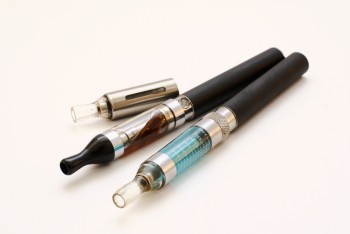Let’s talk about vaping
Posted on April 14, 2021 by the Canadian Paediatric Society | Permalink
Topic(s): Position statements / practice points, Public education
By Nicholas Chadi, MD, MPH, FRCPC, FAAP
It’s 5:30 p.m. I’m an hour behind schedule in clinic. Noah (not his real name), a 16-year-old transgender boy with gender dysphoria, chronic suicidal ideation, and a severe nicotine use disorder is my last patient of the day. “Noah, I’m so sorry I’m late. Is there something you’d like us to talk about today?”
During his last few appointments, Noah talked to me at length about his vape tricks and about how he could vape all day without his teachers (or parents) suspecting anything. He also told me how the high nicotine concentration fruit-flavored vaping pods were “the best thing in the world,” giving him a “head rush, that is also calming at the same time.”
According to the latest national statistics, approximately half of high school seniors have tried a vaping product and nearly one-third report using in the past month. There has never been such a fast-growing trend in the history of adolescent substance use surveys.
As an adolescent medicine physician working primarily with youth with mental health problems, I hear about vaping every day in clinic. My patients tell me how easy it is for them to buy vaping products at school, or directly from a vape shop. They also tell me how addictive these products can be, especially if they contain nicotine or tetrahydrocannabinol (THC), the psychoactive substance contained in cannabis. More often than not, my patients are flabbergasted when I tell them that they are consuming the equivalent in nicotine of several packs of cigarettes per week.
While the long-term health risks of youth vaping remain largely unknown, emerging evidence is showing several short- and medium-term health risks, ranging from acute vaping-related lung injuries and burns to associated mental health and substance use disorders. Initially presented as a less harmful alternative to smoking for adults who were regular cigarette smokers, there is currently no reliable evidence that vaping is an effective smoking cessation strategy for youth.
Paediatricians can play an important role in vaping prevention by screening all youth for vaping use starting at the age of 12, or younger in some cases. By using a single validated question (“In the past year, how often have you used vapes, e-cigarettes or any other vaping products?”), physicians can initiate a brief motivational interviewing session with youth and send a clear message about the potential harms associated with vaping.
There are still few evidence-based strategies specifically for vaping cessation among youth. However, paediatricians can use behavioural strategies, such as individual and group counseling, as well as pharmacological strategies such as nicotine replacement therapy, when appropriate.
Several provinces have put forward new regulations to limit the sale and appeal of vaping products among youth, including flavour bans and nicotine concentration limits, but these still vary widely. In the meantime, innovative vaping cessation programs are underway, and paediatricians should stay on the watch for new online vaping cessation resources and smartphone apps, some of which have already proven highly effective in helping youth quit in the US.
After reminding Noah of the confidential nature of our discussion, I tell him that I am concerned about his use of vaping products, and that I think that it may be a good idea to tell his parents about how strong his dependence to nicotine has become. He tells me: “I’m not ready to tell my parents, but I’m getting sick of paying all this money on vaping pods. I managed to complete that 14-day abstinence trial you had told me about last time. I’m pretty sure I could quit if I wanted to.”
Astonished by this unexpected willingness to change, I challenge Noah to throw his vaping device in my office trashcan, along with all his vaping pods, which he does, without thinking twice. We both smile. While I am fully aware that Noah’s attempt to quit is still fragile (and that he will very likely be offered a “hit” of his friend’s vape within an hour of leaving my office), it is moments like these that make it all worth it for me.
I will leave you with this parting thought: as paediatricians, we can make a difference, and it can start with something as simple as: “Let’s talk about vaping”.
For more information and tools: www.cps.ca/en/vaping.
Dr. Nicholas Chadi is a paediatrician and clinician investigator specialized in adolescent and addiction medicine. He is a Clinical Assistant Professor in the Department of Paediatrics at Sainte-Justine University Hospital Centre in Montreal and lead author of the new Canadian Paediatric Society position statement, Protecting children and adolescents against the risks of vaping.
Copyright
The Canadian Paediatric Society holds copyright on all information we publish on this blog. For complete details, read our Copyright Policy.
Disclaimer
The information on this blog should not be used as a substitute for medical care and advice. The views of blog writers do not necessarily represent the views of the Canadian Paediatric Society.
Last updated: Dec 8, 2021

